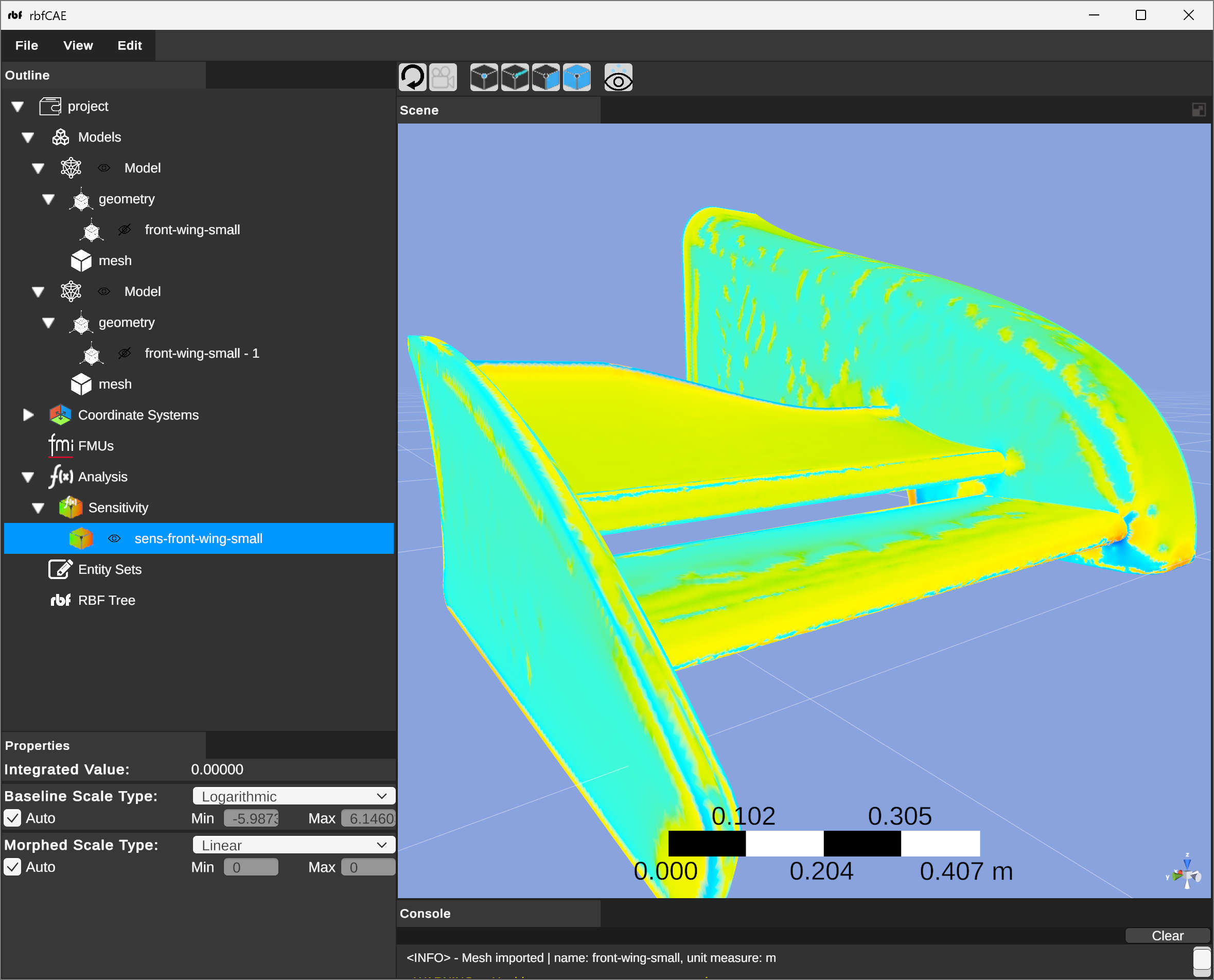
Smart AI Solutions for ROM and Virtual Reality
rbfAI introduces an advanced artificial intelligence framework that transforms reduced-order modeling (ROM) and virtual reality (VR) applications in engineering. By integrating AI-driven predictive capabilities with cutting-edge simulation techniques, rbfAI enables the creation of fast and accurate surrogate models, dramatically reducing computational costs while maintaining high precision. With seamless support for immersive VR environments, it enhances data visualization and interactive model exploration, offering engineers a more intuitive and dynamic simulation experience. rbfAI drives smarter decision-making, accelerating the development of next-generation designs.
The rbfROM connector enables the creation and interaction with static reduced-order models (ROMs), significantly accelerating CAE simulations. It automates the data sampling, compression, and model generation process, using Proper Orthogonal Decomposition (POD) to reduce computational complexity. ROMs of both mesh deformation and CAE results are stored as Functional Mock-up Units (FMUs), allowing real-time shape and physics manipulation. This connector seamlessly integrates with various CAE solvers, enabling fast design space exploration and digital twin applications.
The rbfVR connector provides an immersive virtual reality (VR) experience, enabling users to interact with digital twins using devices such as Meta Quest 3 and Apple Vision Pro. It imports FMUs generated by rbfROM, along with surface meshes and interactive handles, creating a real-time collaborative environment. This allows engineers to visualize and manipulate CAE models in a fully immersive setting, enhancing design evaluation, training, and remote collaboration. The VR experience supports intuitive shape control and real-time physics updates, making it a cutting-edge tool for engineering visualization.
The rbfADJOINT connector enables fast interactive post-processing of adjoint solutions, allowing engineers to analyze sensitivity maps and optimize shapes efficiently. It reads adjoint sensitivities from CAE solvers, visualizing them as colored maps over surface meshes to identify critical regions for optimization. A real-time dashboard within the UI provides instant feedback on the impact of shape modifications on performance metrics. This makes rbfADJOINT an essential tool for adjoint-based design optimization, enhancing workflows in aerodynamics, structural analysis, and multiphysics simulations.
The rbfROC module features an advanced connection with the OpenCascade engine. It allows CAD based actions in two possible directions. CAD2MESH allows to provide as input iso-topological variations of a geometry as step files or as brep files. The rbfROC CAD2MESH allows to create a field capable to morph the underlying mesh of the baseline CAD onto the variation; the field can be exported as a cloud of points. The MESH2CAD allows to warp an existing CAD model onto a deformed shape known as cloud of points or as a mesh and its deformation; the original brep is converted into NURBS of high order to accomodate the shape variation.
